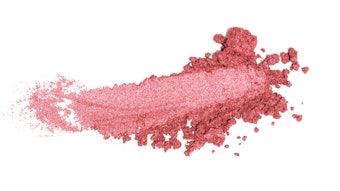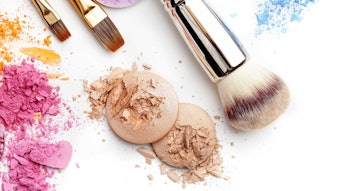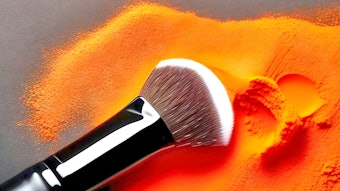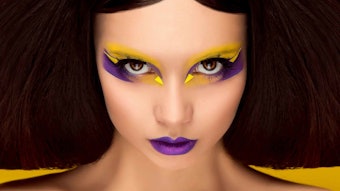Metallic pigments can impart brilliance, color and coverage to many other cosmetic colorants. Although international regulations have restricted the list of allowed colorants for cosmetics and personal care, metallic pigments can be used to expand the existing color palette available to cosmetic formulators by mixing them with other colorants, such as organics and pearlescent pigments. In addition, they can create polychromatic effects. Metallic pigments generally are additive in effects with other colorants—they can affect the tone of the color, the tinting strength and the color play (see Color Terms sidebar). (Insert Color Terms sidebar near here)
The unique effects of metallic pigments are based on the play of light on the metal pigment surface, which is caused by the reflection and scattering of incident light. The metallic effect is impacted greatly by the pigment orientation in relation to the surface and smoothness of the substrate, depending considerably upon the formulation, rheology and application conditions of the final product. Furthermore, a variety of effects—from a subtle matte to a more sparkling metallic reflection—can be developed within the relatively narrow range of particles allowed by the US Food and Drug Administration (FDA). The FDA requires aluminum, bronze and copper to be 95% less than 45 m.
Metal pigments do not allow light to pass through them, thereby imparting more complete coverage, in comparison to other pigment categories such as absorption and pearlescent pigments. This coverage provides many benefits in all categories of color cosmetics and in skin care; for example, a 1% loading of a silica-encapsulated metallic in a skin care emulsion can even skin tone and texture without showing any apparent coloration. This has interesting possibilities for foundations, concealers and lotions designed to improve the appearance of the skin.










